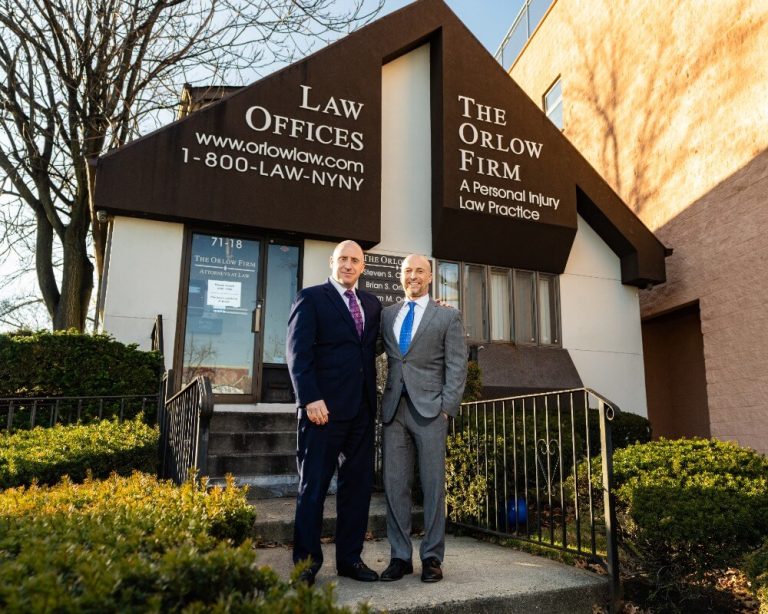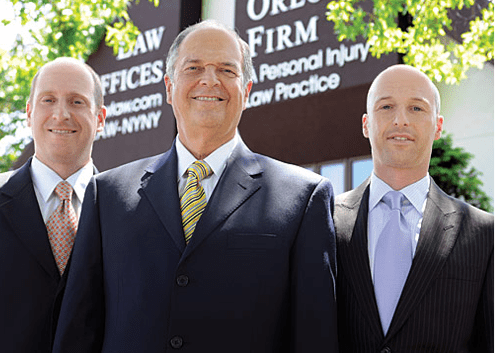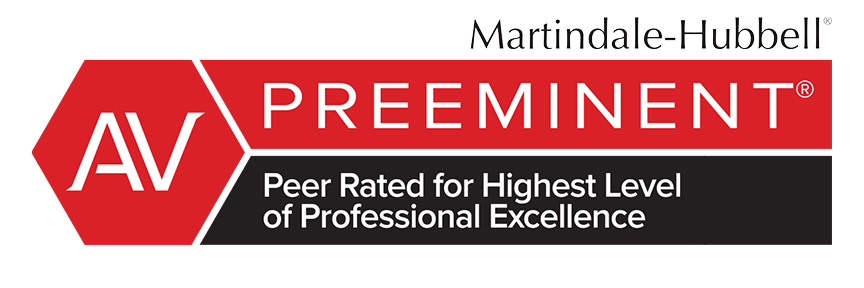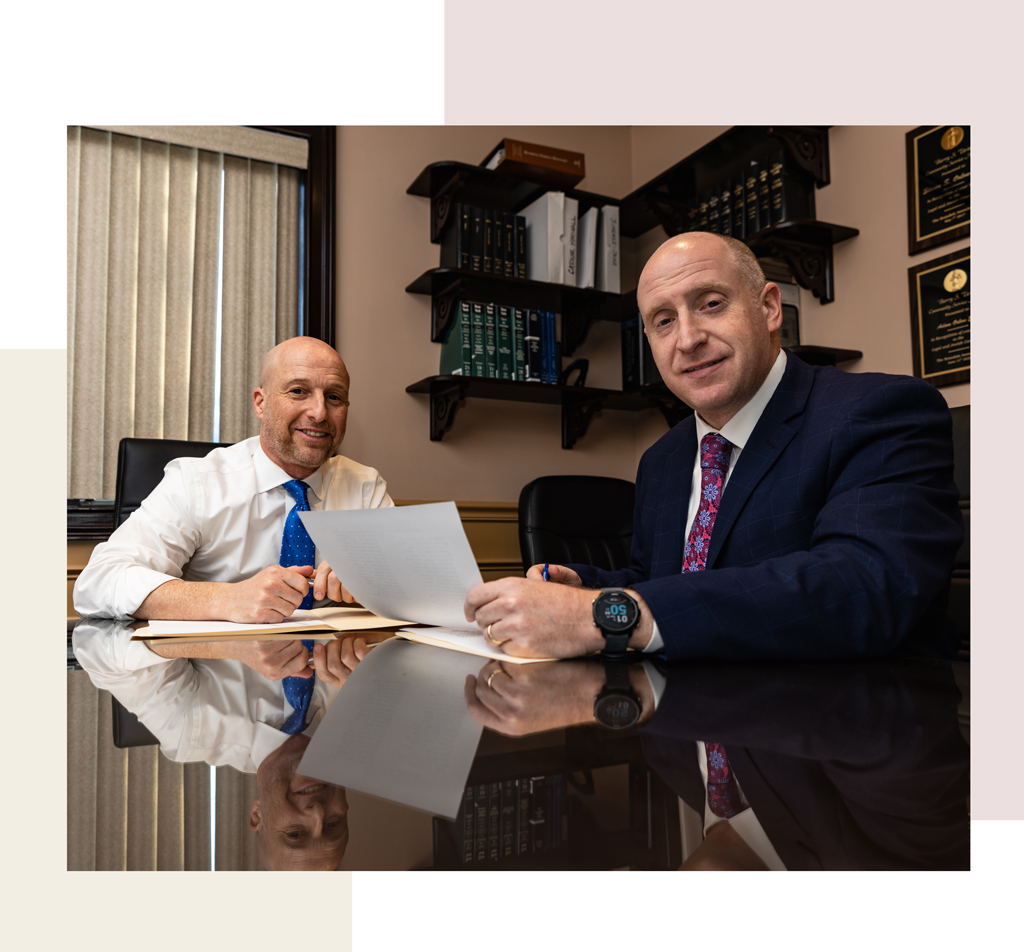The Following People Contributed to This Page
Cindy Cordova is a seasoned legal writer with over seven years of experience crafting clear, informative, and professional content for law firm websites. With a B.A. in English from Trinity Christian College, she combines her strong writing background with a deep understanding of legal topics to help firms connect with their clients through trustworthy and accessible content.
- August 1, 2025
How to Gather Evidence After an NYC Accident to Strengthen Your Personal Injury Claim
In the moments following an accident, it’s easy to feel overwhelmed, especially in a fast-paced city like New York. However, the actions you take immediately after a crash or injury can have a huge impact on your ability to recover fair compensation later. That’s because strong, well-documented evidence is the foundation of a successful personal injury claim.
Whether you were injured in a car accident, a slip and fall, a workplace incident, or a construction site accident, gathering the right evidence can help show what happened, prove who was at fault, and demonstrate how your life has been affected.
To best protect your legal rights, try to gather as much evidence as possible right away, including photos, videos, witness contact information, and official reports.
Your safety and medical care come first. If you’re unable to collect evidence at the scene, don’t worry—there are still many ways to build a strong claim. A trusted friend, family member, or your attorney can help gather missing evidence later, such as surveillance footage, medical records, or witness statements. In New York, police reports and emergency responder notes can also serve as key documentation when you’re unable to act in the moment.
Not sure where to begin? The Orlow Firm can help. Call (646) 647-3398 for a free consultation.
How To Gather Evidence For A Strong Personal Injury Claim
Gathering evidence as soon as possible after an accident is critical. Evidence helps establish what happened, who is responsible, and how the accident has affected your health and finances.
Here’s a detailed breakdown of how to gather evidence:
- Documenting the Incident:
- Photos: Take clear, time-stamped photos of the accident scene, including vehicle positions, property damage, visible injuries, road conditions, weather, lighting, and any surrounding buildings or landmarks, which will be helpful later.
- Videos: While photos are useful, video can be especially valuable since it captures more details and context. Reviewing the footage later may reveal things you didn’t notice at the time. Narrating as you record or adding notes as soon as possible can also help preserve important facts while they’re fresh in your mind.
- Witness Information: Get names, phone numbers, and emails of any witnesses. Ask where they were standing and, if possible, record a short statement in their own words.
- Official Reports: Obtain copies of police reports and incident reports from workplaces, property managers, or other authorities.
- Security Footage: If the accident occurred near businesses, request surveillance footage promptly, as many systems overwrite files quickly.
- Gathering Medical Records:
- Treatment Documentation: Collect ambulance records, emergency room reports, diagnostic imaging (X-rays, MRIs), clinical notes, and treatment plans.
- Medical Expenses: Keep all receipts for care, prescriptions, and related costs.
- Documenting Injuries:
- Photographic Evidence: Photograph your injuries right after the accident and throughout your recovery.
- Pain Journal: Keep a dated log describing your pain, symptoms, and how the injuries impact your daily activities.
- Gathering Physical Evidence:
- Physical Evidence: If safe, preserve items like torn clothing, damaged personal property, or vehicle debris.
- Vehicle Damage: Photograph the damage to all vehicles involved from multiple angles.
- Documenting Lost Wages:
- Work Documentation: Save pay stubs, employment contracts, employer letters, and any documents showing missed work or reduced hours due to the injury.
A personal injury attorney can offer essential guidance in collecting and organizing evidence, explaining your legal rights, and navigating the complexities of the claims process. Their experience can help ensure that no critical detail is missed and that your case is built on a strong foundation.
Thorough, well-organized evidence is key to proving liability and maximizing your chances of receiving full and fair compensation.
Top 5 Tips for On-Scene Evidence Collection
In the chaotic moments following an accident in New York City, it’s easy to feel disoriented. Adrenaline can cloud your judgment, and critical details may slip away quickly. But the immediate aftermath is a crucial window of opportunity to gather evidence that can significantly strengthen a future personal injury claim.
More than just following basic steps, effective on-scene evidence collection means capturing detailed, meaningful information—details that can make a major difference in proving what happened.
This guide outlines the top five tips for thoroughly documenting any accident scene—whether it’s a car crash, slip and fall, construction incident, or other injury event. Every photo you take, detail you record, and witness you identify helps build a clear, persuasive foundation for your case.
Tip #1: Take Photos and Videos from Every Angle
Visual evidence is often the most powerful and immediate way to document an accident. Your smartphone is an essential tool—use it to capture both wide shots for context and close-ups for detail.
Focus on:
- Vehicle positions and visible damage (from multiple angles)
- License plates and identifying vehicle features
- Any injuries (yours or others)
- Surrounding elements: street signs, traffic lights, skid marks, road conditions, debris, and nearby landmarks or storefronts
- Weather and lighting conditions
Whenever possible, record video as well. Video captures more context, can help identify overlooked details later, and may even show the movement of people or vehicles. Narrating your video as you record can help preserve your immediate impressions while they’re fresh.
Make sure your phone’s date and time stamp features are enabled. And above all, only take photos or video if it is safe to do so.
Tip #2: Get Complete Contact Info from Witnesses
Witnesses provide independent accounts that can help verify how the accident happened. Their statements may support your version of events and help fill in missing details.
Here’s how to gather witness info effectively:
- Approach politely and promptly: Thank them for stopping, and explain that their observations could be helpful in understanding what happened.
- Collect full contact info: Ask for name, phone number, and email—more than one method of contact is best.
- Ask for a brief recorded statement (if they’re comfortable): Use your phone’s voice recorder to capture their firsthand observations.
- Note their location: Ask where they were standing or positioned when they witnessed the event.
- Let them speak freely: Avoid leading questions. Their honest, unbiased account is more valuable than one shaped to support your claim.
Tip #3: Write Down What Happened While It’s Fresh
Adrenaline can distort memory. Writing down everything you remember—as soon as possible—helps preserve details that might fade or become confused later.
Include:
- Time and location: Be precise. Include street names, intersections, landmarks, direction of travel, and time of day.
- Conditions: Record weather, lighting, and any road or environmental factors like potholes, wet floors, or poor signage.
- All parties involved: Note names, contact info, driver’s license numbers, license plates, and insurance information.
- Your injuries: Even if they seem minor, describe your symptoms clearly (e.g., “sharp pain in left ankle,” “nausea after impact”).
- Your account: Write a factual, neutral description of what happened. Avoid blame or guessing motivations (e.g., say “the car struck my vehicle while I was stopped at the red light,” not “the driver was texting”). Use your phone’s notes app or a voice memo for quick and secure documentation.
Tip #4: Preserve Any Physical Evidence
Physical items from the accident scene may become valuable proof. Knowing how to preserve them properly can make a difference in your claim.
Follow these tips:
- Don’t disturb the scene unnecessarily: Unless it’s for safety, avoid moving objects until after photographing them in place.
- Photograph first: Before collecting any item, take clear photos showing its position relative to the scene.
- Save damaged belongings: Torn clothing, broken glasses, a cracked phone—any damaged item can support your case.
- Preserve hazardous materials (safely): For example, if you slipped on a spill, you can photograph it with a ruler for scale. If a product malfunctions, preserve it unaltered.
- Store carefully: Use clean, sealed containers or bags. Label each item with when, where, and how it was collected.
Tip #5: Request Official Reports and Document Numbers
Official reports provide a neutral, third-party account of what occurred. These records can help verify the details of your claim.
At the scene:
- Ask responding officers for their names, badge numbers, and the report number.
- In workplace or construction incidents, request the name and contact info of whoever is filing the internal report (e.g., a site supervisor or manager).
After the incident:
- For car accidents, request a copy of the police report (often MV-104A in New York) through the precinct or DMV.
- For non-vehicular cases, contact the property owner or business for an internal incident report.
- In New York, you may also need to file your own MV-104 report with the DMV within 10 days if the crash involved injury, death, or property damage exceeding $1,000.
These reports provide a structured, time-stamped summary of the event and may include diagrams, witness statements, and officer conclusions—all of which help support your version of events.
For immediate help and a free consultation, call The Orlow Firm today at (646) 647-3398.
How Can Gathering Evidence Help Your Personal Injury Claim in NYC?
Gathering strong, detailed evidence after an accident is one of the most important steps you can take to support a personal injury claim. In a busy city like New York—where accidents happen frequently and proving fault can be complex—clear documentation can make all the difference.
Whether you’ve been injured in a car crash, slip and fall, or workplace accident, the right evidence helps establish what happened, who was responsible, and how the incident has affected your health and finances.
Here’s how collecting the right evidence can help your case:
-
Clarifies how the accident occurred
Photos, videos, and witness statements help reconstruct the scene and explain the cause of the incident. For example, if you slipped on a wet floor in a Bronx grocery store, a photo showing the spill—and the absence of a warning sign—could strongly support your case. -
Links your injuries to the accident
Medical records and photos taken shortly after the incident help show that your injuries were caused by the accident—not by a pre-existing condition or an unrelated event. -
Supports your claim for compensation
Documents such as doctor’s notes, medical bills, pharmacy receipts, and pay stubs demonstrate the financial impact of your injuries. This includes the cost of treatment, lost income, and other out-of-pocket expenses. -
Helps your attorney build a strong legal case
The more facts and documentation your attorney has, the more effectively they can protect your rights. Strong evidence allows your lawyer to present a clear, compelling claim to the insurance company or in court. -
Protects your claim from challenges
Insurance adjusters may try to downplay your injuries or shift blame. A well-documented case can help prevent these tactics by clearly presenting the facts.
Proving liability in New York City can be especially challenging due to traffic congestion, crowded sidewalks, and the state’s no-fault insurance laws. While no-fault coverage pays for basic medical expenses after a car accident, it may not cover all your losses. If your injuries are classified as “serious” under New York law, you may be eligible to file a personal injury lawsuit for additional damages—including pain and suffering.
In these cases, thorough evidence collection becomes even more critical. For example, if you were injured on a construction site in Brooklyn, preserving site photos, incident reports, and statements from co-workers can be essential to proving unsafe conditions or employer negligence.
If you’re not sure what evidence to collect or how to secure it, a personal injury attorney can guide you through the process. At The Orlow Firm, we help accident victims throughout New York City gather the right evidence, understand their rights, and build strong claims from day one.
For clear, knowledgeable support, contact The Orlow Firm at (646) 647-3398 for a free consultation.
Why Are Photos and Videos Important for Your NYC Accident Case?
Photos and videos are among the most compelling forms of evidence in any personal injury case. In a fast-moving city like New York, where accidents happen quickly and scenes can change just as fast, having clear visual documentation can make a significant difference in the outcome of your claim.
Why Visual Evidence Matters:
-
Captures Key Details at the Scene
After an accident, stress and adrenaline can affect your memory. Photos and videos preserve exactly how the scene looked—road conditions, weather, signage, lighting, and more—which may not be available later. -
Shows the Extent of Damage
Images of vehicle damage, broken pavement, or unsafe property conditions help demonstrate how severe the incident was. This visual context can support the nature and force of your injuries. -
Documents Physical Injuries
Photographs of bruises, cuts, swelling, or mobility aids—taken shortly after the incident and throughout recovery—show how your body was impacted over time. This helps validate the seriousness of your condition. -
Supports Your Version of Events
If there’s a dispute over who was at fault, visual proof can help clarify the facts. A video might show a driver running a red light or highlight a hazard that was clearly ignored or unaddressed. -
Provides Time-Stamped Evidence
Most smartphone photos and videos automatically include metadata such as the date and time, which helps confirm when and where the accident happened—adding another layer of credibility.
In NYC, there are often traffic cameras, building surveillance systems, and even bystander recordings nearby. If your accident occurred in a store, on public transit, or near a business, ask right away if security footage is available. These recordings are frequently deleted or overwritten—so act fast or speak to an attorney who can formally request and preserve them.
Tips for Taking Useful Photos and Videos:
- Capture wide-angle shots of the entire scene to show context and surroundings.
- Take close-up photos of damage to vehicles, property, and any personal items affected.
- Photograph visible injuries as soon as possible—and again during recovery.
- Include skid marks, street signs, crosswalks, or anything that helps explain how the accident occurred.
- Use video to record your impressions or witness statements while they’re still fresh.
Photos and videos bring your story to life in ways that written notes alone cannot. Clear visual evidence can be the difference between a contested claim and a well-supported one.
If you’ve been in an accident in New York City and aren’t sure how to begin gathering evidence, The Orlow Firm can help. Call (646) 647-3398 today for a free and confidential consultation.
Who Can Help Strengthen Your Claim with Witness Statements?
Witness statements can play a vital role in supporting your personal injury claim after an accident in New York City. In many cases, witnesses can confirm key details, clarify who was at fault, or provide a perspective you may have missed due to stress, injury, or shock. Strong witness accounts can influence how insurance companies—and even a jury—evaluate your claim.
Who Can Provide Useful Witness Statements?
- Bystanders at the Scene: People who directly observed the accident can offer powerful, unbiased accounts. They may be able to describe what led up to the incident, who was involved, and how it unfolded.
- Passengers: Anyone riding in your vehicle—or another involved vehicle—can offer insights into what happened before, during, and after the crash. Their account may help establish the severity of the impact or the behavior of the parties involved.
- Nearby Business Employees: In busy areas like Manhattan or the outer boroughs, many accidents happen near storefronts, restaurants, or apartment buildings. Employees inside may have seen the incident through a window or witnessed unsafe behavior beforehand.
- Emergency Responders: Police officers, EMTs, and firefighters often include factual observations in official reports—such as injuries, damage, or roadway conditions. Their documentation can support or corroborate your claim.
- Medical Providers: While not eyewitnesses, doctors, nurses, and therapists provide essential medical records that link your injuries directly to the accident. Their testimony helps establish the seriousness and cause of your injuries.
How to Make the Most of Witness Statements:
- Ask for Contact Info Early: If someone witnessed the accident, politely request their full name, phone number, and (if possible) email address. Even one reliable witness can make a big difference.
- Take Notes Right Away: Jot down what the witness said, where they were located, and what they observed. Details like the direction of travel or sounds heard can help reconstruct the event.
- Share with Your Lawyer Immediately: If you’re working with a personal injury attorney, provide witness information right away. Your legal team can follow up to collect signed statements, conduct interviews, or call witnesses later if needed.
If you’re unsure how to collect or use witness statements after an accident, you don’t have to do it alone. For help reviewing the details of your case, contact The Orlow Firm at (646) 647-3398 for a free consultation.
What Documents Should You Collect After an Accident in New York City?
After an accident in New York City, the documents you gather can make a big difference in your personal injury claim. These records serve as proof of how the accident happened, the extent of your injuries, and the financial losses you’ve experienced. Gathering the right paperwork early can protect your rights and help build a strong case.
Here are some of the most important documents to gather after an accident:
Key Documents to Collect After an Accident:
-
Police Report
If police responded to the scene, request a copy of the official report. In New York City, you can often obtain this through the New York Police Department (NYPD) or the Department of Motor Vehicles (DMV). The report typically includes names, contact information, witness statements, a description of the accident, and any citations or violations issued. -
Medical Records
Keep all records from doctors, hospitals, urgent care clinics, physical therapists, and any other healthcare providers who treated you. These documents confirm the nature of your injuries and the care you received. -
Medical Bills
Save all invoices and receipts related to your treatment—this includes hospital bills, prescription medications, medical devices, follow-up appointments, and physical therapy. These records help quantify your out-of-pocket expenses. -
Proof of Lost Income
If your injuries forced you to miss work, collect recent pay stubs, past tax returns, and a letter from your employer confirming your missed time and wages. This helps support a claim for lost income or reduced earning capacity. -
Insurance Information
Keep copies of your insurance policy and any communication with your insurance provider. This includes claim numbers, adjuster contact information, and any letters or emails related to coverage or benefits. -
Accident-Related Communication
Save all correspondence related to the incident—this includes emails, text messages, or letters with the other party, your insurer, attorneys, or any witnesses. -
Vehicle Repair Estimates
If your vehicle or personal property was damaged, collect repair estimates, mechanic invoices, and photographs showing the damage before and after repairs. -
Witness Statements
If someone saw the accident, try to gather their name, contact details, and a written or recorded statement about what they witnessed. -
Personal Diary or Notes
Consider keeping a journal or digital log to track your symptoms, pain levels, doctor visits, and how your injuries have affected your daily life. This can be especially helpful in claims that involve long-term pain, emotional distress, or reduced quality of life.
In a fast-paced city like New York, it’s easy for important details to get lost in the shuffle. Staying organized and collecting documentation early on helps create a clear timeline and shows how the accident has affected you—both physically and financially.
If you’re unsure which records are most important for your specific situation, a personal injury lawyer can help you understand what’s needed and how to obtain it. At The Orlow Firm, we’ve helped countless New Yorkers gather the right evidence to support strong, successful claims.
Have questions? We’re here to help. Call (646) 647-3398 today for a free, no-obligation consultation.
FAQ: What You Need to Know About Collecting Evidence After an NYC Accident
What types of evidence are most helpful after an accident in NYC?
The most helpful evidence clearly shows what happened and how you were injured. The more detailed and complete your documentation, the stronger your personal injury claim will be. Key types of evidence include:
- Photos and videos of the scene, vehicles, injuries, and road conditions
- Witness statements from anyone who saw the accident
- Police reports that document the incident and the parties involved
- Medical records that prove your injuries and treatment
- Receipts for expenses like medical care, prescriptions, and transportation
Should I take photos even if the damage seems minor?
Yes. Always take detailed photos, even if the damage or injuries appear small at first. Some issues may worsen over time, and early photos help show the initial condition. Be sure to capture:
- Damage to vehicles from several angles
- Any visible injuries
- Skid marks, broken glass, or debris
- Traffic lights, signs, or crosswalks near the scene
- Street signs or landmarks showing the accident location
What if I’m too injured to collect evidence at the scene?
Your health comes first. If you’re unable to gather evidence:
- Ask a trusted friend, family member, or witness to help
- Rely on emergency responder reports and medical documentation
- Your attorney can also help retrieve missing evidence later
How do I find and contact witnesses?
If possible:
- Ask witnesses at the scene for their name, phone number, and email
- Request a brief description or audio recording of what they saw
- If you didn’t get this info, check the police report—it may include witness names and statements
Why are medical records important for my injury claim?
Medical records:
- Prove the type and severity of your injuries
- Help link your injuries directly to the accident
- Show whether you followed medical advice, which can affect the credibility of your claim
It’s important to get treated promptly and attend all follow-up appointments.
Can I still collect evidence after I’ve left the scene?
Yes. Some evidence can still be gathered days later:
- Request a copy of the police report
- Take photos of your injuries during recovery
- Write down your memory of what happened
- Ask nearby homes or businesses if security footage is available (do this sooner rather than later—videos are often deleted after a few days)
Do I need a lawyer to collect evidence?
While you can gather some evidence on your own, a personal injury lawyer can:
- Secure time-sensitive materials like surveillance footage
- Help avoid mistakes that may harm your case
- Subpoena records or contact parties that may not cooperate directly with you
When should I start gathering evidence?
As soon as it’s safe to do so. The sooner you begin, the more accurate and reliable your evidence will be. Waiting too long can lead to lost details or unavailable witnesses.
If you or someone you care about has been injured in an NYC accident, the evidence you collect can significantly impact your claim. For guidance on what to collect, how to protect your rights, and what to do next, call The Orlow Firm at (646) 647-3398 for a free and confidential consultation.
Injured in an Accident? Contact The Orlow Firm for a Free Consultation
If you’ve been injured in an accident in New York City, gathering strong evidence is one of the most important things you can do to support your personal injury claim. But in the moments after an accident, especially when you’re in pain or shock, knowing what to collect and how to collect it can feel overwhelming.
That’s where we come in.
At The Orlow Firm, we help accident victims understand their rights and take the right steps from the very beginning. During your free consultation, we can:
- Review the facts of your accident and help identify key pieces of evidence, including photos, video footage, or witness information
- Explain which documents (such as medical records or police reports) are critical to building a strong claim
- Help gather evidence if your injuries prevent you from doing so on your own
- Answer your legal questions and guide you through what to expect in the claims process
New York is a no-fault state when it comes to car accidents, but if your injuries meet the serious injury threshold, you may be entitled to file a personal injury lawsuit for additional damages—including pain and suffering. The same applies to injuries from slip and fall accidents, construction accidents, or other negligence-based incidents.
Early action is essential. In a busy city like NYC, evidence can disappear quickly, and witnesses may become harder to reach. Consulting a lawyer promptly can help preserve crucial information and give you peace of mind.
If you’ve been injured in NYC, contact The Orlow Firm at (646) 647-3398 for a free and confidential consultation.
The Following People Contributed to This Page
Cindy Cordova is a seasoned legal writer with over seven years of experience crafting clear, informative, and professional content for law firm websites. With a B.A. in English from Trinity Christian College, she combines her strong writing background with a deep understanding of legal topics to help firms connect with their clients through trustworthy and accessible content.











